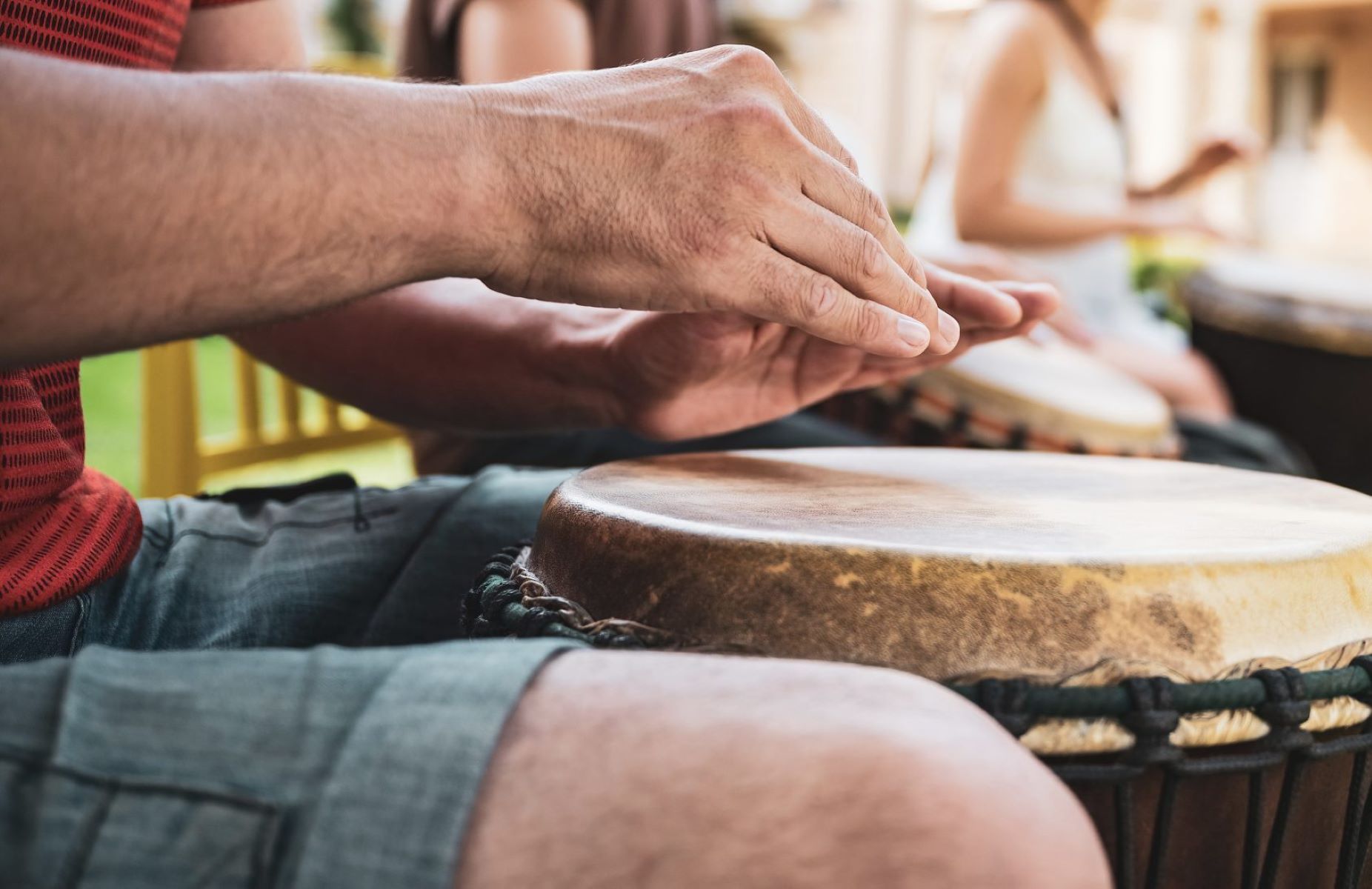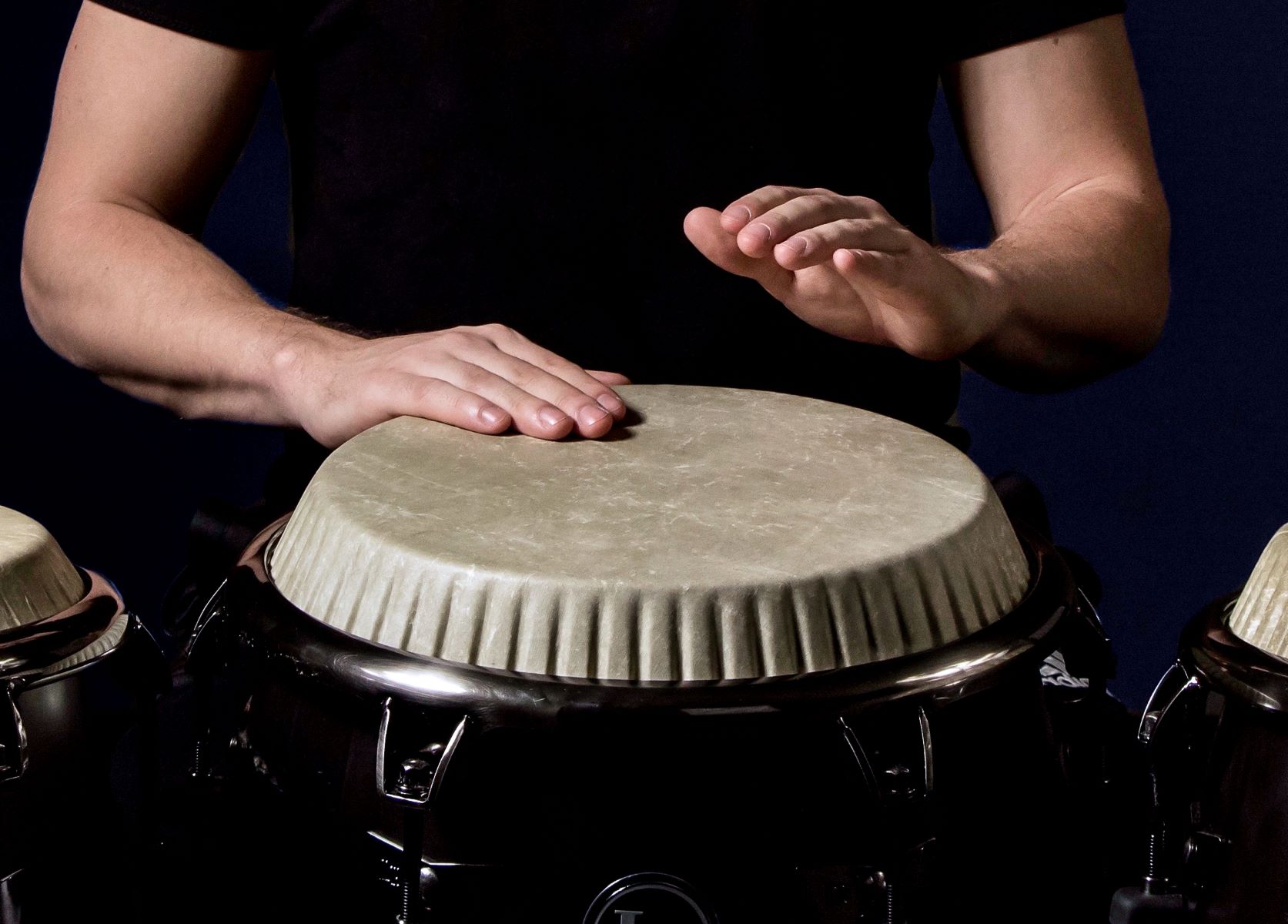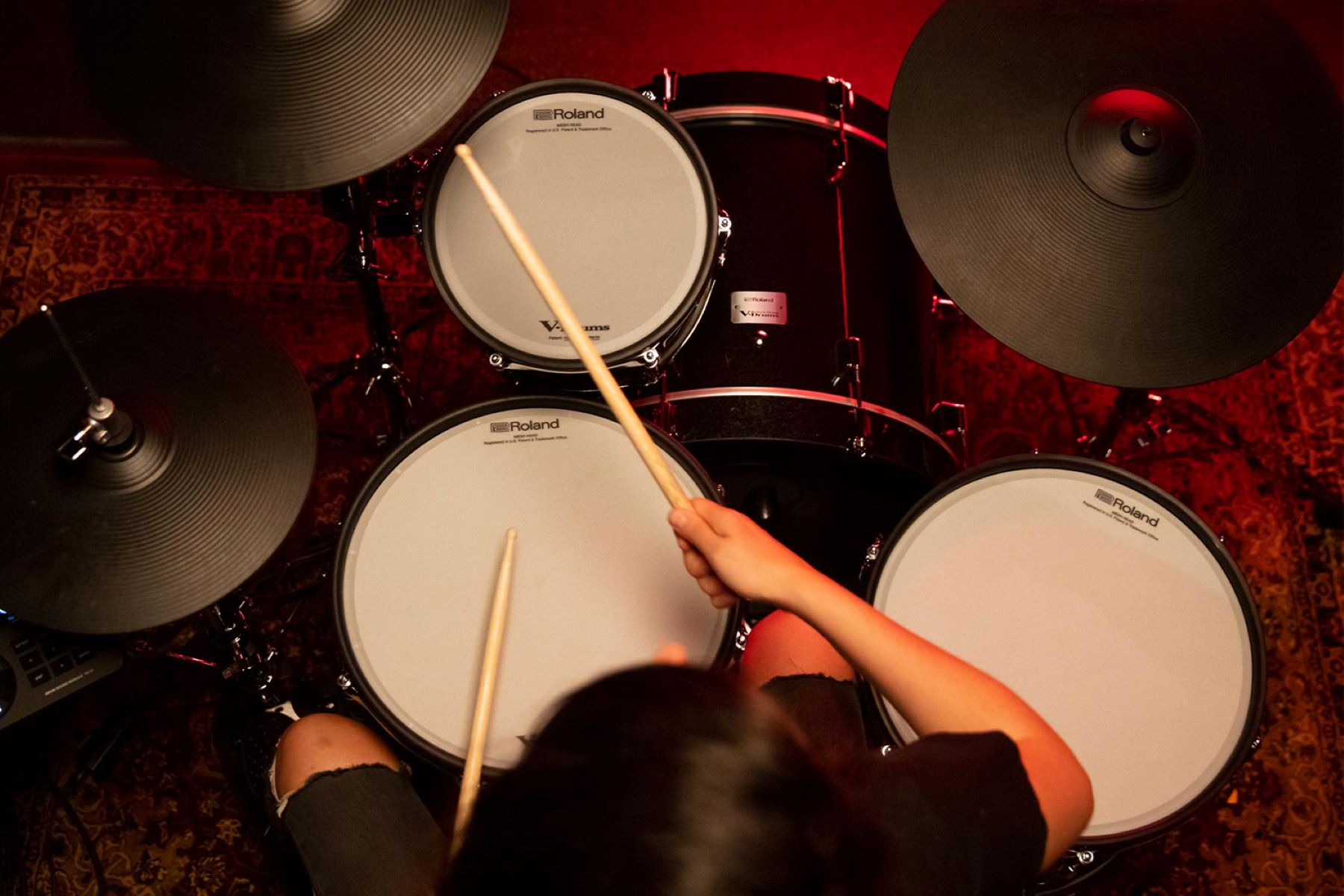Home>Instruments>Drums>How To Play Hand Drums For Beginners


Drums
How To Play Hand Drums For Beginners
Published: February 8, 2024
Learn the basics of playing hand drums with our beginner-friendly guide. Discover essential techniques and tips to start drumming today.
(Many of the links in this article redirect to a specific reviewed product. Your purchase of these products through affiliate links helps to generate commission for AudioLover.com, at no extra cost. Learn more)
Table of Contents
Introduction
Welcome to the captivating world of hand drumming! Whether you’re drawn to the hypnotic rhythms of African djembe, the earthy tones of the conga, or the intricate patterns of the frame drum, learning to play hand drums can be a deeply rewarding and enriching experience. As a beginner, you’re embarking on a journey that not only hones your musical skills but also connects you with a rich cultural heritage that spans continents and centuries.
Hand drumming is a universal language that transcends barriers, inviting individuals of all ages and backgrounds to participate in the joy of rhythm-making. The pulsating beats of hand drums have the power to uplift spirits, foster community, and awaken a sense of primal connection within us. Whether you’re seeking a creative outlet, a stress-relieving hobby, or a new form of self-expression, the world of hand drumming holds endless possibilities.
In this comprehensive guide, we’ll explore the fundamental aspects of playing hand drums for beginners. From selecting the right drum to mastering basic techniques and rhythms, this resource is designed to set you on the path to becoming a confident and skilled hand drummer. Along the way, we’ll provide valuable tips, practice strategies, and resources to support your learning journey. So, grab your drum, embrace the rhythm, and let’s embark on this rhythmic adventure together!
Choosing the Right Hand Drum
Before delving into the art of hand drumming, it’s essential to select an instrument that resonates with both your musical preferences and physical comfort. With a myriad of hand drums available, each with its unique sound and cultural significance, the process of choosing the right one can be an enriching experience in itself.
When exploring hand drums, it’s crucial to consider the following factors:
- Sound and Tone: Different hand drums produce varying tones and timbres. The djembe, with its deep bass and crisp slaps, offers a rich tonal range, while the conga produces resonant, warm tones. Frame drums, such as the bodhrán, create earthy, nuanced sounds. Listen to recordings or attend live performances to discern the sonic qualities that resonate with you.
- Size and Weight: Hand drums come in diverse sizes and weights. Consider the physicality of the instrument, ensuring that it feels comfortable to hold and play. For instance, the djembe, with its wide base and slender body, requires a different playing posture than the compact, sturdier frame drum.
- Cultural Connection: Many hand drums have deep cultural roots and histories. Exploring the cultural origins and traditions associated with each drum can deepen your appreciation for its significance and provide insight into the rhythmic traditions of different communities.
- Personal Preference: Ultimately, your affinity for a particular hand drum should stem from a personal connection. Whether it’s the allure of a specific cultural heritage, the allure of a particular sound, or the tactile appeal of the drum’s construction, your instrument should resonate with your individual sensibilities.
As a beginner, it’s beneficial to seek guidance from experienced drummers or music educators when choosing your first hand drum. They can offer valuable insights, demonstrate playing techniques, and provide recommendations based on your musical interests and aspirations.
Remember, the process of selecting a hand drum is an opportunity to embark on a cultural and sonic exploration. Embrace the journey of discovering an instrument that not only complements your musical journey but also resonates with your soul.
Understanding Basic Hand Drum Techniques
As you venture into the realm of hand drumming, familiarizing yourself with fundamental playing techniques forms the cornerstone of your rhythmic journey. These techniques lay the groundwork for producing captivating sounds and unlocking the expressive potential of your hand drum. Here are essential techniques to master as a beginner:
- Hand Placement: Proper hand placement is crucial for achieving distinct tones on a hand drum. Whether it’s the bass, tone, or slap, understanding where and how to position your hands on the drum’s surface is essential for producing varied sounds.
- Stroke Types: Hand drums offer a diverse range of stroke types, including open tones, muted tones, and slaps, each contributing to the rich tapestry of rhythmic expression. Learning to execute these strokes with precision and control enhances your ability to convey nuanced emotions through your playing.
- Rhythmic Patterns: Familiarize yourself with basic rhythmic patterns that are foundational to hand drumming. These patterns, often rooted in traditional rhythms from diverse cultures, serve as building blocks for creating captivating grooves and improvisations.
- Dynamic Control: Mastering dynamic control allows you to modulate the volume and intensity of your playing, adding depth and dimension to your performances. From subtle whispers to emphatic accents, dynamic variation breathes life into your rhythmic expressions.
- Body Movement: Embrace the physicality of hand drumming by understanding how body movement and posture influence your playing. Cultivating a relaxed yet engaged physical presence while drumming enhances your connection to the rhythm and promotes ergonomic playing habits.
While grasping these techniques, remember that patience and consistent practice are your allies. Begin by focusing on one technique at a time, gradually integrating them into your playing repertoire. Utilize instructional videos, books, or seek guidance from experienced drummers to refine your understanding of these fundamental techniques.
As you embark on this rhythmic odyssey, celebrate the joy of experimentation and discovery. Embrace the unique voice of your hand drum and allow these foundational techniques to pave the way for your expressive musical journey.
Holding the Drum and Playing Position
The manner in which you hold your hand drum and position your body significantly impacts your playing comfort, technique, and overall musical experience. Whether you’re seated or standing, adopting an ergonomic and stable playing position is essential for both fluidity of movement and the production of resonant, articulate sounds.
Consider the following guidelines for holding your hand drum and establishing an optimal playing position:
- Seated Position: When seated, place the drum between your legs, ensuring that it rests securely and comfortably. For drums with a pronounced base, such as the djembe, consider using a padded or cushioned base to prevent slippage and minimize discomfort during extended playing sessions.
- Stability and Balance: Whether seated or standing, prioritize stability and balance. Maintain a centered posture, and ensure that the drum is positioned at a height and angle that allows for natural and unhindered arm movement. This facilitates fluid transitions between different playing areas on the drum’s surface.
- Arm and Hand Placement: Position your arms and hands in a relaxed yet poised manner. Avoid excessive tension in your shoulders and wrists, and allow your hands to move freely across the drum’s surface. Experiment with different hand placements to discover the most comfortable and effective positions for producing varied tones and articulations.
- Body Alignment: Pay attention to your overall body alignment while playing. Engage your core muscles to support your posture, and avoid slouching or leaning excessively toward the drum. A balanced and upright posture promotes ease of movement and contributes to a more resonant and expressive playing experience.
As you explore different playing positions, take the time to assess your physical comfort and the ease with which you can access different areas of the drum’s surface. Your playing position should facilitate effortless movement while minimizing strain on your body, allowing you to immerse yourself fully in the rhythmic exploration.
Remember that finding the ideal playing position is a personalized journey. Embrace experimentation and adapt your playing posture based on your comfort, the specific demands of the music you’re playing, and the unique characteristics of your hand drum. By prioritizing comfort and ergonomics, you set the stage for a fulfilling and sustainable hand drumming practice.
Basic Hand Drum Rhythms
Embarking on the rhythmic journey of hand drumming involves immersing yourself in a diverse tapestry of rhythmic patterns and grooves. These foundational rhythms, originating from various cultural traditions, serve as the building blocks for your rhythmic vocabulary and improvisational prowess. As a beginner, familiarizing yourself with basic hand drum rhythms lays the groundwork for your rhythmic exploration and fosters a deeper connection to the expressive potential of your instrument.
Here are several fundamental hand drum rhythms that serve as an excellent starting point for beginners:
- Djembe Rhythms: The djembe, a West African drum, boasts a rich tradition of rhythmic patterns. The “Djembe Bass” and “Djembe Tone” rhythm, characterized by distinct bass and tone tones, form the backbone of many traditional West African grooves.
- Conga Rhythms: Conga drums, originating from Afro-Cuban traditions, offer an array of foundational rhythms such as the “Tumbao” and “Cascara.” These rhythms encompass intricate interplay between the drum’s open tones, muted tones, and slaps, creating dynamic and compelling grooves.
- Frame Drum Rhythms: Frame drums, prevalent in Middle Eastern and Mediterranean music, feature rhythmic patterns like the “Maqsum” and “Baladi.” These rhythms showcase the mesmerizing interplay of hand techniques and nuanced accents, evoking the evocative sounds of ancient traditions.
- Rhythmic Variations: Experiment with variations on basic rhythms to expand your rhythmic palette. Explore altering the timing, accentuation, and phrasing of foundational patterns, infusing them with your unique interpretive flair.
As you delve into these rhythms, pay close attention to the nuances of each pattern, focusing on achieving clarity, precision, and dynamic expression. Practice these rhythms at a comfortable tempo, gradually increasing the speed as your proficiency grows. Additionally, consider incorporating call-and-response exercises, where you echo rhythmic phrases played by a mentor or recorded source, honing your ability to internalize and reproduce rhythmic motifs.
Remember that the essence of hand drum rhythms lies not only in their technical execution but also in the spirit and emotion you infuse into each beat. Embrace the rhythmic heritage of your chosen hand drum, and allow these foundational rhythms to ignite your passion for rhythmic exploration and musical storytelling.
Practice Tips for Beginners
Embarking on a journey of hand drumming as a beginner is an exhilarating and rewarding endeavor. As you immerse yourself in the rhythmic world of hand drums, consistent and mindful practice forms the bedrock of your musical growth and proficiency. Here are valuable practice tips to guide you on your rhythmic odyssey:
- Establish a Consistent Routine: Set aside dedicated time for practice each day, even if it’s just a few minutes. Consistency is key to building muscle memory, refining techniques, and internalizing rhythmic patterns.
- Focus on Fundamental Techniques: Prioritize mastering fundamental hand drumming techniques such as hand placement, stroke types, and dynamic control. A strong foundation in these techniques lays the groundwork for your rhythmic development.
- Utilize Metronomes and Backing Tracks: Practice with a metronome to develop a strong sense of timing and rhythmic precision. Additionally, playing along with backing tracks or rhythmic accompaniments enhances your ability to groove within a musical context.
- Embrace Mindful Listening: Immerse yourself in recordings of master drummers and diverse musical styles. Actively listen to the nuances of rhythm, tone, and expression, allowing these experiences to inform and inspire your own playing.
- Explore Dynamic Playing: Experiment with varying your playing dynamics, from delicate whispers to assertive accents. Dynamic control adds depth and emotion to your rhythms, elevating your musical expression.
- Cultivate Patience and Persistence: Embrace the learning process with patience and persistence. Celebrate incremental progress and view challenges as opportunities for growth, trusting in your ability to steadily improve over time.
- Seek Guidance and Community: Engage with experienced drummers, instructors, or online communities to seek guidance, feedback, and camaraderie. Learning from others and sharing your musical journey fosters a supportive and enriching learning environment.
As you progress on your hand drumming voyage, remember that each practice session is an opportunity for self-discovery and artistic exploration. Embrace the rhythmic tapestry unfolding beneath your hands, and allow the joy of rhythm-making to fuel your dedication and passion for the art of hand drumming.
Resources for Learning Hand Drumming
As you embark on your hand drumming journey, accessing valuable resources and educational materials can significantly enhance your learning experience and deepen your rhythmic proficiency. Whether you prefer hands-on instruction, digital learning platforms, or printed materials, a wealth of resources awaits to support your exploration of hand drumming. Here are diverse avenues for expanding your rhythmic knowledge and skills:
- Local Drumming Communities: Explore local drum circles, workshops, and classes in your area. Engaging with a community of drummers offers invaluable opportunities for hands-on learning, mentorship, and collaborative rhythmic experiences.
- Private Instruction: Consider seeking private lessons from experienced hand drumming instructors. Personalized guidance allows for tailored instruction, focused feedback, and individualized support as you navigate the intricacies of hand drumming.
- Online Tutorials and Courses: Numerous online platforms offer comprehensive tutorials, courses, and instructional videos tailored to hand drumming enthusiasts of all levels. These resources provide flexibility and accessibility, allowing you to learn at your own pace and delve into diverse rhythmic traditions.
- Printed Educational Materials: Explore books, instructional manuals, and notation resources dedicated to hand drumming. These printed materials offer in-depth exploration of rhythmic techniques, cultural contexts, and historical perspectives, serving as valuable references for your rhythmic studies.
- Rhythmic Retreats and Workshops: Immerse yourself in intensive rhythmic retreats and workshops led by renowned drumming masters. These immersive experiences offer a deep dive into diverse rhythmic traditions, fostering a rich tapestry of learning and cultural exchange.
- Online Drumming Communities: Join online forums, social media groups, and digital communities focused on hand drumming. Engaging with a global network of drumming enthusiasts provides opportunities for knowledge sharing, collaborative projects, and a sense of belonging within the vibrant drumming community.
- Rhythmic Recordings and Performances: Immerse yourself in recordings of master drummers and live performances across various musical genres. Actively listening to diverse rhythmic expressions cultivates a deeper understanding of musical phrasing, improvisation, and the expressive potential of hand drums.
By exploring these diverse resources, you can tailor your learning journey to align with your unique learning style, musical aspirations, and cultural interests. Embrace the wealth of knowledge available to you, and allow these resources to inspire and guide you as you delve deeper into the captivating world of hand drumming.











